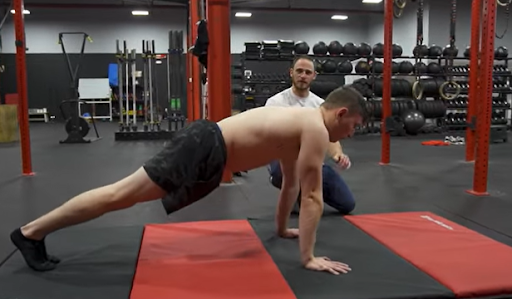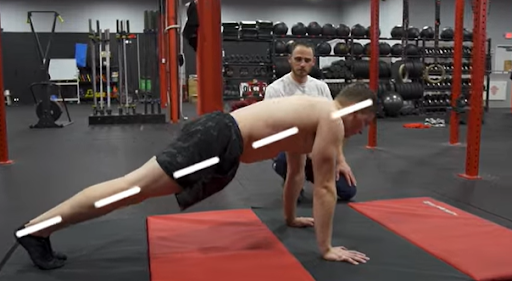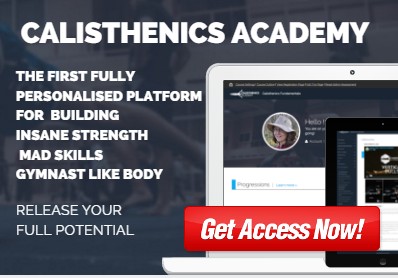Ever found yourself struggling with push-ups, wondering why such a seemingly straightforward exercise feels so incredibly tough?🥺
You’re not alone.
✊Picture this: you’re in position, ready to conquer those push-ups, yet as you start, it’s an uphill battle. What makes an exercise that involves lowering and lifting your body weight so universally challenging?
Let’s dive into the nitty-gritty of why push-ups often prove to be a surprising test of strength and endurance and how you can easily learn it.
🙌What are Push-Ups
Push-ups are a classic bodyweight exercise that primarily targets the chest, shoulders, triceps, and core muscles.
The exercise involves assuming a prone position, supporting your body with your hands and toes while keeping your body straight, and lowering yourself toward the ground by bending your elbows. The movement engages multiple muscle groups and is renowned for its effectiveness in building upper body strength and endurance.
Check out our related articles that can help you master push-ups:
- 📍 How Beginners Do Push-ups: Mastering the Basics
- 📍 How to do Push-ups: The Ultimate Guide
- 📍 How to Do Perfect Push-up: The Ultimate Guide for Maximum Gains and Explosive Strength
🤯Why Push-Ups Are Hard
Despite their simplicity in concept, mastering the perfect push-up proves to be an uphill task for many. So, why do these seemingly basic movements become such a source of struggle?
1. 🥺 Body Weight Challenge
When doing push-ups, you’re not just lifting yourself off the ground; you’re pushing against more than half of your body weight. This load can feel overwhelming, especially for beginners or those developing upper body strength. It’s a physical resistance that demands strength and control.
For someone weighing 150 pounds, each push-up requires them to push approximately 75 pounds against gravity. Now, imagine the intensity of this effort when you’re just starting or haven’t developed the necessary muscle strength yet. It can feel like trying to lift a weight much heavier than you’re accustomed to, making the exercise seem disproportionately challenging.
Pushing against one’s body weight requires engaging multiple muscle groups simultaneously—chest, shoulders, triceps, and core—to maintain stability and proper form. Developing this coordination and strength takes time, and it’s why beginners might find push-ups particularly daunting.
Overcoming the bodyweight challenge in push-ups involves progressive training. Starting with modified versions or variations that reduce the load can gradually build strength and confidence. As strength develops, the body adapts, making the exercise more manageable over time.
2. 💪 Form and Muscle Focus
Executing a proper push-up isn’t just about moving up and down. It’s about engaging specific muscles—like the chest, shoulders, triceps, and core—to maintain a straight body line. Failing to activate these muscles👇 properly can lead to a sagging hip or improper bending.
- ✅Chest: The primary mover in a push-up, the chest muscles, are responsible for the pressing action that lifts your body off the ground.
- ✅Shoulders: Actively engaging the shoulders stabilizes the upper body, preventing excessive strain on the joints.
- ✅Triceps: These muscles assist the chest in extending the elbows, aiding in the upward movement of the push-up.
- ✅Core: The core muscles, including the abdominals and lower back, act as stabilizers, maintaining the body’s alignment throughout the exercise.
Maintaining a straight body line is crucial. If these muscles aren’t engaged properly:
- ❌ A sagging or drooping hip indicates inadequate engagement of the core, causing instability and potentially straining the lower back.
- ❌ Improper bending, often seen when the body isn’t aligned correctly, places undue stress on joints and diminishes the effectiveness of the exercise.
For many beginners or those unfamiliar with the nuances of muscle engagement, activating all these muscle groups simultaneously can be challenging. It requires not only strength but also a mind-muscle connection—a conscious effort to focus on engaging the right muscles at the right time.
Progressively building muscle strength and coordination, starting with modified versions of push-ups and gradually advancing as mastery improves, can significantly enhance the ability to engage these specific muscle groups effectively.
Ultimately, understanding the importance of form and muscle engagement in push-ups is pivotal. It’s not just about lifting your body off the ground; it’s about doing so in a controlled, coordinated manner that optimizes muscle engagement and minimizes the risk of injury.
3. 🧐Attention to Detail
The secret to a successful push-up lies in the details often overlooked. Many rush through the exercise, missing the importance of maintaining consistent form. Small deviations, like hips jutting up or improper bending, impact how effective the push-up is.
Even for seasoned athletes, maintaining attention to detail in push-ups remains crucial. Continuously refining form, correcting any deviations, and being mindful of body alignment ensures consistent progress and prevents the development of bad habits.
4. 🎯Controlled Movements
Speed isn’t the key to mastering push-ups. Rushing through push-ups might seem like a shortcut to higher numbers, but it sacrifices the fundamental aspects of the exercise—proper form and muscle engagement. Push-ups aren’t a race; they’re an exercise that demands control and precision.
Slowing down the movement allows you to understand each step better, ensuring you cover the full range of motion. It enables you to focus on the details of form and muscle engagement throughout the entire range of motion. This deliberate approach fosters a deeper understanding of how each muscle group contributes to the movement.
Emphasizing controlled movements might initially reduce the number of push-ups you can perform, but the long-term benefits are substantial. Improved form, increased muscle engagement, reduced risk of injury, and better strength gains are among the rewards of this focused approach.
5. 💯Versatility and Challenges
Push-ups aren’t a one-size-fits-all deal. There are numerous variations, each targeting different muscles and levels of difficulty.
As you progress, these variations keep pushing your boundaries, demanding varying levels of muscle strength and coordination.
Related article: 📍DON’T SABOTAGE YOUR PROGRESS – 10 common push-up mistakes you need to avoid
🧐Frequently Asked Questions
🔎 How can beginners improve at push-ups?
Beginners can start with modified versions or incline push-ups to gradually build strength and form. Focusing on proper technique and gradually progressing to more challenging variations helps in steady improvement.
🔎 Can push-ups be made easier or more challenging based on fitness level?
Absolutely. Various modifications or progressions exist to tailor the difficulty level of push-ups. Adjusting the incline, widening or narrowing hand placement, or exploring advanced variations cater to different fitness levels.
🔎 Why are push-ups a staple exercise despite their difficulty?
Push-ups are an excellent compound exercise that targets multiple muscle groups simultaneously, aiding in overall strength, muscle endurance, and core stability. Their adaptability and effectiveness make them a fundamental part of fitness routines.
🔎 How long does it take to master push-ups?
Mastery varies for each individual and depends on starting fitness levels and consistency in training. With dedicated practice, focusing on proper form, and gradual progression, significant improvement can be achieved over time.
📌Conclusion
Push-ups are challenging due to multiple factors: the resistance of body weight, the demand for precise muscle engagement of the chest, shoulders, triceps, and core, and the importance of controlled movements covering the full range of motion. The array of variations adds diverse challenges, targeting various muscles and skill levels.💯
🎯Mastering push-ups requires meticulous attention to detail in form and technique, demanding deliberate and disciplined practice. This exercise epitomizes a comprehensive test of strength, focus, and perseverance, making its mastery a rewarding fitness achievement.
Looking to conquer push-ups like a pro? The Movement Athlete offers a valuable assessment designed to guide you on your journey to push-up mastery. Take the assessment and get a detailed, personalized training plan that includes recommended workouts.





